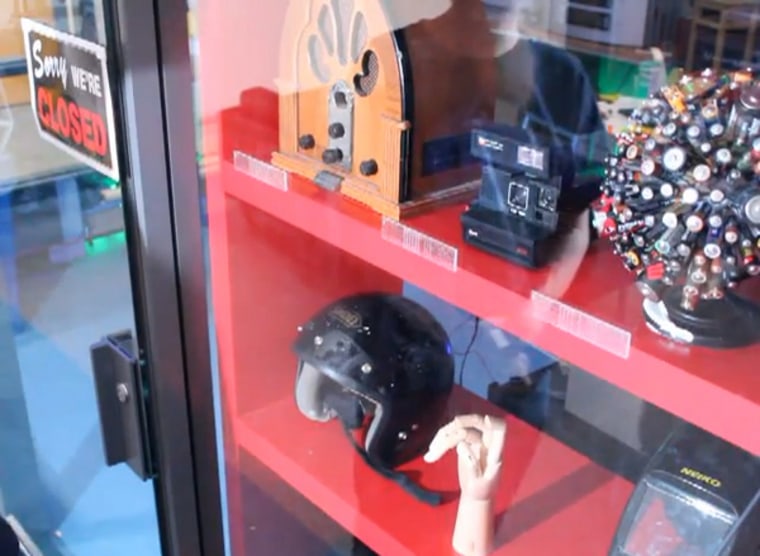Curious about how much that couch costs in the store window? Soon, you may be able to scratch at the window to learn its name and price. A team of computer scientists has created a system that lets people scratch at specially notched patterns to hear information, flip to the next slide during a presentation, set up call waiting, or perform other actions.
The scratch pattern system is simple to set up and ready for use, says Chris Harrison, one of the system's creators and a doctoral student in computer interaction research at Carnegie Mellon University. "It's really a kind of smack-your-forehead simple idea," he told TechNewsDaily.
He and two of his colleagues at Carnegie Mellon recently published a paper about how to etch the patterns and write the computer code that listens for people swiping at the patterns. Now, the researchers are hoping people will think of creative ways to use what they're calling "acoustic barcodes." "People are welcome to implement it," Harrison said.
As examples, he and his colleagues built a talking store window, a talking wooden toy, some smartphone apps and magnetic shapes a teacher could stick to a whiteboard to control an in-classroom projector.
The acoustic barcodes look similar to the traditional printed variety. The codes are made of a series of etched lines of varying thicknesses, with varying amounts of space between each line. To activate an acoustic barcode, users drag a fingernail or another tool over the lines.
A microphone picks up the sound of the scratch and sends it to a computer, where Harrison and his colleagues' program deduces what the original etched pattern was, based on the sound. The program is able to compensate for different swiping speeds, to some extent, Harrison said. It knows to ignore people tapping on a pattern by accident, and it works for patterns etched in granite, wood, paper, plastic and thin acrylic stickers.
Anyone who wants to use the system would set the program to perform different actions depending on what pattern it hears. In the store window Harrison and his colleagues made, different barcodes stuck on the window, in front of different items, brought up each item's unique description and price.
Quick response, or QR codes, perform many of the same functions Harrison's acoustic barcodes do. People can stick them on a variety of surfaces, and they can bring people to Web pages that let users read information, purchase an item, or do other things. Indeed, QR codes are able to encode more information than an acoustic bar code can because QR codes have two dimensions — the X and Y axes — while acoustic barcodes can be swiped in only one direction, Harrison said.
But acoustic barcodes could find their niche, too, he thinks. One advantage of acoustic barcodes is that they look less obtrusive than black-and-white QR codes, he said. Window-etched codes may be clear, while toys made have codes carved in.
"At least it's an extra approach in the toolbox for people to consider when they want to tag objects," Harrison said.
Harrison and his colleagues presented their work Oct. 10 in Massachusetts, during a conference hosted by the Association for Computing Machinery. They also made a video for the conference, explaining their work:
Follow TechNewsDaily on Twitter @News_Innovation, or on Facebook.
- 8 Most Innovative Designs of the Year
- New Invisible QR Codes Could Thwart Counterfeiters
- 6 Apps and Sites That Help You Decode the Election
Copyright 2012 TechNewsDaily, a TechMediaNetwork company. All rights reserved. This material may not be published, broadcast, rewritten or redistributed.
